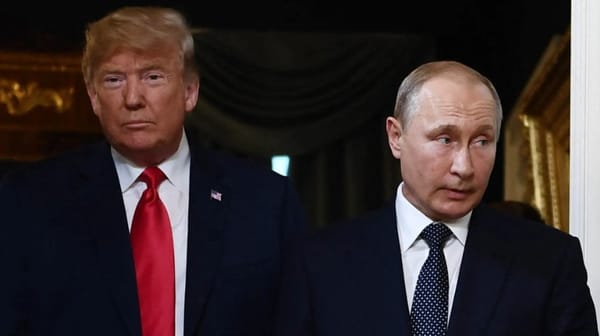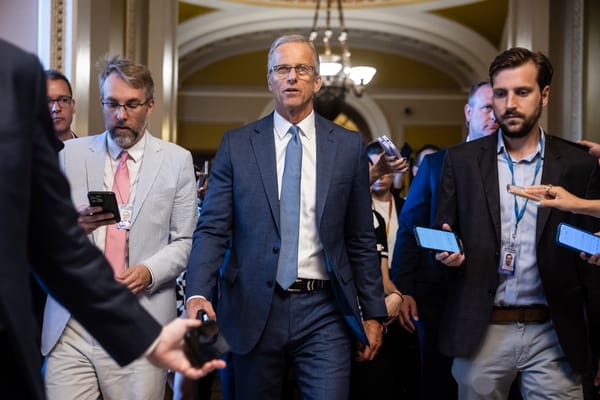Stock Market Rebounds Amid Optimism Over Tariff Negotiations: A Temporary Respite?

On Tuesday, April 8, 2025, U.S. stock markets staged a sharp rebound following a three-day sell-off that had erased trillions of dollars in market value. The recovery was fueled by investor optimism over potential tariff negotiations between the Trump administration and several key trading partners, including Japan and South Korea. Treasury Secretary Scott Bessent’s comments about ongoing discussions provided a glimmer of hope for markets rattled by President Donald Trump’s sweeping tariffs, which have escalated fears of a global trade war.
Despite the rebound, analysts caution that the underlying risks posed by the tariffs remain significant, with long-term implications for U.S. economic growth, inflation, and global trade relationships.
Market Performance
Major Indices Surge
U.S. stock markets opened higher on Tuesday morning, providing much-needed relief after three days of steep declines:
- Dow Jones Industrial Average: Gained over 1,300 points (+3.6%), climbing to 39,155.79.
- S&P 500: Rose by 3.4%, adding 160 points to reach 5,222.27.
- Nasdaq Composite: Increased by 3.7%, or nearly 570 points, to settle at 16,172.32.
The gains were led by technology stocks and megacap companies:
- Nvidia (NVDA) and Meta Platforms (META) each surged by 5%.
- Tesla (TSLA) rose by 4%.
- The technology sector as a whole climbed 3.5%, while semiconductor stocks gained 3.6%.
The small-cap Russell 2000 index also advanced by 2.5%, recovering some of its losses from the previous week.
Global Markets Follow Suit
The optimism extended beyond U.S. markets:
- Asia: Japan’s Nikkei 225 surged by 6%, rebounding from an 18-month low reached on Monday. Hong Kong’s Hang Seng Index rose by 1.5% after suffering its largest single-day drop since the Asian financial crisis of 1997.
- Europe: The Stoxx Europe 600 index gained 2.7%, with France’s CAC 40 and Germany’s DAX rising by 2% and 2.4%, respectively.
Drivers of the Rebound
Treasury Secretary Scott Bessent’s Comments
Investor sentiment was buoyed by remarks from Treasury Secretary Scott Bessent, who told CNBC that the Trump administration is actively negotiating tariff agreements with multiple countries.
“I think we can end up with some good deals,” Bessent said. “President Trump has maximum negotiating leverage right here, right now.”
Bessent emphasized that the outreach from foreign governments demonstrates the effectiveness of Trump’s strategy in forcing other nations to address trade imbalances and reduce barriers to U.S. exports.
Hopes for Bilateral Trade Talks
The prospect of bilateral trade negotiations with Japan and South Korea further lifted market confidence:
- White House officials confirmed that preliminary discussions with Japanese officials are underway.
- South Korean President Han Duck-soo reportedly spoke with Trump over the weekend about potential exemptions from certain tariffs.
These developments eased concerns that the administration was unwilling to negotiate on its aggressive tariff measures.
Technical Factors
Some analysts attributed Tuesday’s rally to technical factors rather than fundamental changes in market conditions:
- The price-to-earnings ratio for S&P 500 companies fell below historical averages on Monday, prompting bargain-hunting among investors.
- Keith Lerner of Truist noted that markets were “highly oversold” after three days of sharp declines, creating opportunities for short-term rebounds.
“This is a very standard reaction following a shock period,” Lerner said. “Movements are rarely linear in times of uncertainty.”
Underlying Risks Remain
Tariffs Still Loom Large
While Tuesday’s rally provided temporary relief, analysts warned that the broader risks associated with Trump’s tariffs remain unresolved:
- The universal 10% tariff on all imports took effect on April 5.
- Reciprocal tariffs targeting countries like China (34%), Canada (25%), and Japan (24%) are set to begin on April 9.
- Sector-specific tariffs on vehicles (25%) and auto parts (25%) will follow later this month.
These measures have raised concerns about inflationary pressures and disruptions to global supply chains.
“The tariff overhang isn’t going away,” said Adam Crisafulli of Vital Knowledge in a research note. “Even if some numbers wind up getting trimmed, the huge disruptions to global trade will have a substantially negative effect on growth.”
Inflationary Pressures
Economists warn that higher import costs resulting from the tariffs could exacerbate inflation:
- Core inflation is projected to rise from its current level of 2.8% to as high as 4% by year-end.
- Everyday items such as electronics, clothing, and groceries are expected to see significant price increases.
Federal Reserve Chair Jerome Powell has already cautioned that prolonged inflation could complicate monetary policy decisions:
“Our responsibility is to ensure that a one-off surge in price levels does not evolve into a persistent inflation issue,” Powell said last week.
Global Trade Tensions
The risk of escalating trade tensions remains high:
- China has refused to back down from its retaliatory measures, including a matching 34% tariff on all U.S. imports and export restrictions on rare earth elements.
- European leaders have criticized Trump’s approach but expressed willingness to negotiate exemptions for key industries.
Lukman Otunuga, senior market analyst at FXTM, warned that sentiment could shift quickly if negotiations falter:
“While today’s market bounce offers some relief, trade tensions remain the elephant in the room.”
Corporate Earnings Season Begins
The rebound comes just as corporate earnings season kicks off this week:
- Delta Air Lines is set to report earnings on Wednesday.
- Major U.S. banks will release their results on Friday.
Investors will be closely watching these reports for insights into how companies are navigating the challenges posed by rising costs and global trade disruptions.
Expert Opinions
Short-Term Optimism
Some analysts believe Tuesday’s rally reflects cautious optimism about potential progress in trade negotiations:
“Markets are reacting positively to any hint of de-escalation,” said Michael Block of Third Seven Capital. “But it’s important not to overinterpret these moves.”
Long-Term Concerns
Others remain skeptical about the sustainability of the recovery:
“This is not a resolution—it’s a reprieve,” said Seema Shah, Chief Global Strategist at Principal Asset Management. “The underlying issues driving market volatility have not been addressed.”
Looking Ahead
As investors digest Tuesday’s rebound, several key developments bear watching:
- Will bilateral trade talks lead to meaningful agreements or stall amid escalating tensions?
- How will businesses adapt to higher costs and supply chain disruptions?
- Can markets sustain their recovery amid ongoing uncertainty?
With reciprocal tariffs set to take effect Wednesday, all eyes will be on how both domestic industries and international trading partners respond—and whether Trump’s gamble will pay off or lead to unintended consequences for both the U.S. economy and global markets.
Conclusion
Tuesday’s stock market rebound offers a momentary respite from last week’s historic sell-off but underscores ongoing uncertainty surrounding President Trump’s aggressive tariff strategy. While hopes for bilateral negotiations have provided a glimmer of optimism, analysts caution that the underlying risks remain significant.
As businesses brace for higher costs and consumers face rising prices, the coming weeks will be critical in determining whether these measures deliver their intended benefits or exacerbate economic instability in an increasingly interconnected world.




